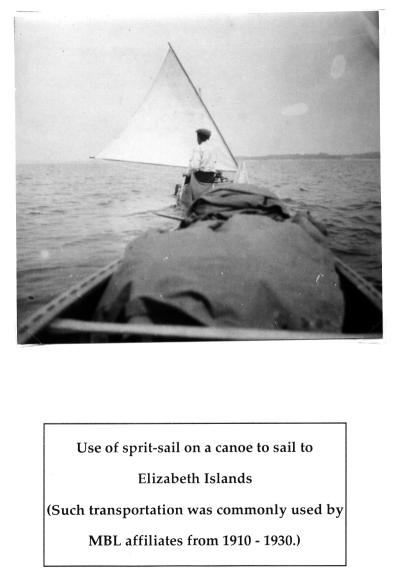Matching Items (1,539)
Filtering by
- Creators: Marine Biological Laboratory Archives
Description
Laboratory automation systems have seen a lot of technological advances in recent times. As a result, the software that is written for them are becoming increasingly sophisticated. Existing software architectures and standards are targeted to a wider domain of software development and need to be customized in order to use them for developing software for laboratory automation systems. This thesis proposes an architecture that is based on existing software architectural paradigms and is specifically tailored to developing software for a laboratory automation system. The architecture is based on fairly autonomous software components that can be distributed across multiple computers. The components in the architecture make use of asynchronous communication methodologies that are facilitated by passing messages between one another. The architecture can be used to develop software that is distributed, responsive and thread-safe. The thesis also proposes a framework that has been developed to implement the ideas proposed by the architecture. The framework is used to develop software that is scalable, distributed, responsive and thread-safe. The framework currently has components to control very commonly used laboratory automation devices such as mechanical stages, cameras, and also to do common laboratory automation functionalities such as imaging.
ContributorsKuppuswamy, Venkataramanan (Author) / Meldrum, Deirdre (Thesis advisor) / Collofello, James (Thesis advisor) / Sarjoughian, Hessam S. (Committee member) / Johnson, Roger (Committee member) / Arizona State University (Publisher)
Created2012

Description
Single cell analysis has become increasingly important in understanding disease onset, progression, treatment and prognosis, especially when applied to cancer where cellular responses are highly heterogeneous. Through the advent of single cell computerized tomography (Cell-CT), researchers and clinicians now have the ability to obtain high resolution three-dimensional (3D) reconstructions of single cells. Yet to date, no live-cell compatible version of the technology exists. In this thesis, a microfluidic chip with the ability to rotate live single cells in hydrodynamic microvortices about an axis parallel to the optical focal plane has been demonstrated. The chip utilizes a novel 3D microchamber design arranged beneath a main channel creating flow detachment into the chamber, producing recirculating flow conditions. Single cells are flowed through the main channel, held in the center of the microvortex by an optical trap, and rotated by the forces induced by the recirculating fluid flow. Computational fluid dynamics (CFD) was employed to optimize the geometry of the microchamber. Two methods for the fabrication of the 3D microchamber were devised: anisotropic etching of silicon and backside diffuser photolithography (BDPL). First, the optimization of the silicon etching conditions was demonstrated through design of experiment (DOE). In addition, a non-conventional method of soft-lithography was demonstrated which incorporates the use of two positive molds, one of the main channel and the other of the microchambers, compressed together during replication to produce a single ultra-thin (<200 µm) negative used for device assembly. Second, methods for using thick negative photoresists such as SU-8 with BDPL have been developed which include a new simple and effective method for promoting the adhesion of SU-8 to glass. An assembly method that bonds two individual ultra-thin (<100 µm) replications of the channel and the microfeatures has also been demonstrated. Finally, a pressure driven pumping system with nanoliter per minute flow rate regulation, sub-second response times, and < 3% flow variability has been designed and characterized. The fabrication and assembly of this device is inexpensive and utilizes simple variants of conventional microfluidic fabrication techniques, making it easily accessible to the single cell analysis community.
ContributorsMyers, Jakrey R (Author) / Meldrum, Deirdre (Thesis advisor) / Johnson, Roger (Committee member) / Frakes, David (Committee member) / Arizona State University (Publisher)
Created2012

Description
Background
Grading schemes for breast cancer diagnosis are predominantly based on pathologists' qualitative assessment of altered nuclear structure from 2D brightfield microscopy images. However, cells are three-dimensional (3D) objects with features that are inherently 3D and thus poorly characterized in 2D. Our goal is to quantitatively characterize nuclear structure in 3D, assess its variation with malignancy, and investigate whether such variation correlates with standard nuclear grading criteria.
Methodology
We applied micro-optical computed tomographic imaging and automated 3D nuclear morphometry to quantify and compare morphological variations between human cell lines derived from normal, benign fibrocystic or malignant breast epithelium. To reproduce the appearance and contrast in clinical cytopathology images, we stained cells with hematoxylin and eosin and obtained 3D images of 150 individual stained cells of each cell type at sub-micron, isotropic resolution. Applying volumetric image analyses, we computed 42 3D morphological and textural descriptors of cellular and nuclear structure.
Principal Findings
We observed four distinct nuclear shape categories, the predominant being a mushroom cap shape. Cell and nuclear volumes increased from normal to fibrocystic to metastatic type, but there was little difference in the volume ratio of nucleus to cytoplasm (N/C ratio) between the lines. Abnormal cell nuclei had more nucleoli, markedly higher density and clumpier chromatin organization compared to normal. Nuclei of non-tumorigenic, fibrocystic cells exhibited larger textural variations than metastatic cell nuclei. At p<0.0025 by ANOVA and Kruskal-Wallis tests, 90% of our computed descriptors statistically differentiated control from abnormal cell populations, but only 69% of these features statistically differentiated the fibrocystic from the metastatic cell populations.
Conclusions
Our results provide a new perspective on nuclear structure variations associated with malignancy and point to the value of automated quantitative 3D nuclear morphometry as an objective tool to enable development of sensitive and specific nuclear grade classification in breast cancer diagnosis.
Grading schemes for breast cancer diagnosis are predominantly based on pathologists' qualitative assessment of altered nuclear structure from 2D brightfield microscopy images. However, cells are three-dimensional (3D) objects with features that are inherently 3D and thus poorly characterized in 2D. Our goal is to quantitatively characterize nuclear structure in 3D, assess its variation with malignancy, and investigate whether such variation correlates with standard nuclear grading criteria.
Methodology
We applied micro-optical computed tomographic imaging and automated 3D nuclear morphometry to quantify and compare morphological variations between human cell lines derived from normal, benign fibrocystic or malignant breast epithelium. To reproduce the appearance and contrast in clinical cytopathology images, we stained cells with hematoxylin and eosin and obtained 3D images of 150 individual stained cells of each cell type at sub-micron, isotropic resolution. Applying volumetric image analyses, we computed 42 3D morphological and textural descriptors of cellular and nuclear structure.
Principal Findings
We observed four distinct nuclear shape categories, the predominant being a mushroom cap shape. Cell and nuclear volumes increased from normal to fibrocystic to metastatic type, but there was little difference in the volume ratio of nucleus to cytoplasm (N/C ratio) between the lines. Abnormal cell nuclei had more nucleoli, markedly higher density and clumpier chromatin organization compared to normal. Nuclei of non-tumorigenic, fibrocystic cells exhibited larger textural variations than metastatic cell nuclei. At p<0.0025 by ANOVA and Kruskal-Wallis tests, 90% of our computed descriptors statistically differentiated control from abnormal cell populations, but only 69% of these features statistically differentiated the fibrocystic from the metastatic cell populations.
Conclusions
Our results provide a new perspective on nuclear structure variations associated with malignancy and point to the value of automated quantitative 3D nuclear morphometry as an objective tool to enable development of sensitive and specific nuclear grade classification in breast cancer diagnosis.
ContributorsNandakumar, Vivek (Author) / Kelbauskas, Laimonas (Author) / Hernandez, Kathryn (Author) / Lintecum, Kelly (Author) / Senechal, Patti (Author) / Bussey, Kimberly (Author) / Davies, Paul (Author) / Johnson, Roger (Author) / Meldrum, Deirdre (Author) / Ira A. Fulton Schools of Engineering (Contributor) / School of Electrical, Computer and Energy Engineering (Contributor) / Biodesign Institute (Contributor) / Center for Biosignatures Discovery Automation (Contributor) / College of Liberal Arts and Sciences (Contributor) / School of Life Sciences (Contributor) / Department of Physics (Contributor)
Created2012-01-05

Description
This thesis examines Care Not Cash, a welfare reform measure that replaced traditional cash General Assistance program payments for homeless persons in San Francisco with in-kind social services. Unlike most welfare reform measures, proponents framed Care Not Cash as a progressive policy, aimed at expanding social services and government care for this vulnerable population. Drawing on primary and secondary documents, as well as interviews with homelessness policy experts, this thesis examines the historical and political success of Care Not Cash, and explores the potential need for implementation of a similar program in Phoenix, Arizona.
ContributorsMcCutcheon, Zachary Ryan (Author) / Lucio, Joanna (Thesis director) / Williams, David (Committee member) / Bretts-Jamison, Jake (Committee member) / School of Public Affairs (Contributor) / Barrett, The Honors College (Contributor)
Created2017-05

ContributorsMarine Biological Laboratory Archives (Publisher) / Arizona Board of Regents (Publisher)
Created1935

ContributorsHuettner, Alfred F. (Alfred Francis), b. 1884 (Creator) / Marine Biological Laboratory Archives (Publisher)
Created1918

ContributorsMarine Biological Laboratory Archives (Publisher)

ContributorsHuettner, Alfred F. (Alfred Francis), b. 1884 (Creator) / Marine Biological Laboratory Archives (Publisher)
Created1928

ContributorsHuettner, Alfred F. (Alfred Francis), b. 1884 (Creator) / Marine Biological Laboratory Archives (Publisher)
Created1918

ContributorsHuettner, Alfred F. (Alfred Francis), b. 1884 (Creator) / Marine Biological Laboratory Archives (Publisher)